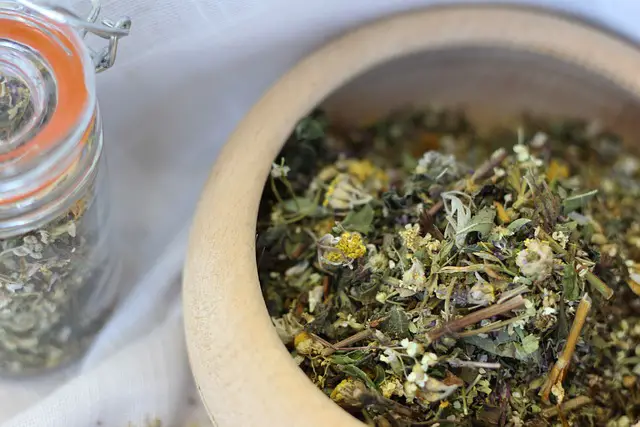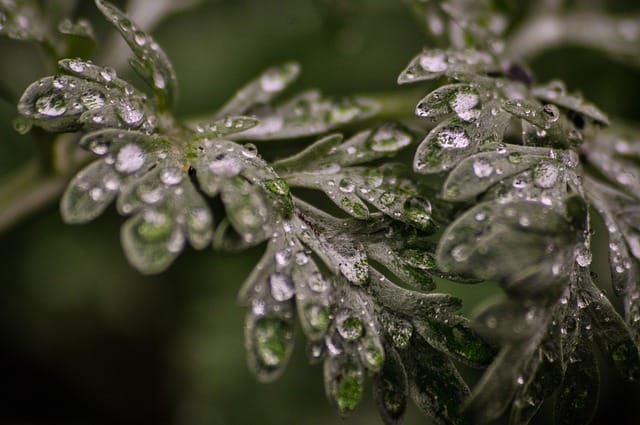Did you know that absinthe was originally created as a medicine?
While that’s not particularly uncommon in the world of spirits, it is an important part of absinthe’s complicated history.
Of course, absinthe didn’t start off in the form that would be enjoyed by famous creatives like Vincent Van Gogh and Oscar Wilde. The addition of additional herbs to make it more pleasant to drink would come later.
In the early days, it was used to better capture and deliver the healing benefits of absinthe’s most important ingredient – Artemisia absinthium or, grande wormwood.
So today, we’re looking at the benefits of this powerful herb!
A Brief Medicinal History of Absinthe
To really understand the benefits of wormwood, we have to start with a quick history lesson.
Artemisia absinthium, commonly known as grande wormwood, is a species of Artemisia that is native to North Africa and temperate regions of Eurasia.
It has been used for centuries as a medicinal herb due to its various health benefits.
In fact, records such as the Ebers Papyrus have shown wormwood used in wine and spirits dating as far back as 1500 BC (and probably even earlier) in Egypt to treat digestive issues or parasites like roundworms.
Meanwhile, archaeological finds in China have also shown evidence of wormwood wines being used for medicinal purposes there! In these cases, the jars contained traces of floral elements and tree resins.
One of the most well-known uses of grande wormwood is in the production of absinthe, a highly alcoholic spirit that originated in Switzerland in the late 18th century.
As in Ancient Egypt and China, Swiss absinthe was originally made as a medicine and was believed to have healing properties thanks to its inclusion of wormwood.
It was made by steeping grande wormwood, along with other herbs and spices, in high-proof alcohol. The resulting green liquid was then diluted with water and sweetened with sugar.
Absinthe was commonly used as a digestive aid and was believed to stimulate the appetite, improve digestion, and relieve pain.
Today, absinthe is still enjoyed as a beverage, but grande wormwood is also used in a variety of other ways. It is believed to have anti-inflammatory properties and may be useful in treating certain types of parasitic infections.
In addition, grande wormwood has been used to relieve pain and may be helpful in managing symptoms associated with conditions such as arthritis and menstrual cramps.
Recommended: How to Properly Prepare Absinthe (Beginner Friendly Guide)

Origins of Absinthe
Absinthe is a distilled spirit that originated in Switzerland in the late 18th century but became popular in France in the 19th century. The drink was originally created as a medicine using grande wormwood, an herb that was believed to have medicinal properties.
The drink quickly became popular among the French, who enjoyed its unique taste and the supposed effects of the wormwood.
As the distillation of absinthe became more popular, more herbs would be added to the mixture by various distillers. These include things such as hyssop, coriander, mint, star anise, and juniper to name only a handful!
Regardless, absinthe always had to contain the “Holy Trinity” of green anise, fennel, and (most importantly) grande wormwood.
Related: Exploring How Absinthe Is Made
The Role of Grande Wormwood in Absinthe Production
Grande wormwood, or Artemisia absinthium, is the key ingredient in absinthe production. The herb is known for its strong and bitter taste, which gives absinthe its distinctive flavor.
The active ingredient in grande wormwood is thujone, which is believed to have psychoactive properties in large doses.
In the early days of absinthe production, grande wormwood was macerated in alcohol and then distilled with other herbs and spices to create the final product. This process allowed the thujone to be extracted from the wormwood and infused into the absinthe.
Despite its popularity, absinthe was banned in many countries in the early 20th century due to concerns about the psychoactive effects of thujone.
However, modern research has shown that the levels of thujone in absinthe are not high enough to cause hallucinations or other psychoactive effects.
Today, absinthe is once again legal in many countries and is enjoyed by people around the world for its unique taste and cultural significance.

The Benefits of Grande Wormwood
Now that we’ve gone over a brief history of absinthe to give some context, let’s look at the benefits of grande wormwood.
Medicinal Properties of Grande Wormwood
Grande Wormwood (Artemisia absinthium) has been used for centuries for its medicinal properties.
It contains several active compounds, including thujone, absinthin, and anabsinthin, which are responsible for its therapeutic effects.
Historically, grande wormwood was used to treat a variety of ailments, including digestive issues, fever, and menstrual problems. It was also used as a natural remedy for malaria, as it is believed to contain potent antimalarial properties.
One of the most well-known medicinal properties of grande wormwood is its ability to stimulate the digestive system.
It can help to increase the production of digestive juices, which can aid in the digestion of food and relieve digestive issues such as bloating, gas, and constipation.
You Might Like: Debunking Common Absinthe Myths!
Health Benefits of Consuming Grande Wormwood
Consuming grande wormwood can provide several health benefits.
One of the most notable is its ability to act as a natural pain reliever. It contains anti-inflammatory compounds that can help to reduce pain and inflammation throughout the body.
This makes it a useful remedy for conditions such as arthritis, menstrual cramps, and headaches.
Grande wormwood has also been shown to have antimicrobial properties, which means it can help to fight off harmful bacteria, viruses, and fungi in the body. This makes it a useful remedy for a variety of infections, including those of the respiratory and urinary tracts.
Additionally, grande wormwood has been shown to have neuroprotective properties, which means it can help to protect the brain from damage and degeneration. This makes it a potentially useful remedy for conditions such as Alzheimer’s disease and Parkinson’s disease.
It is important to note that grande wormwood should be consumed in moderation, as it contains thujone, a compound that can be toxic in high doses. However, when consumed in appropriate amounts, grande wormwood can provide a range of health benefits.
Overall, grande wormwood has a long history of use as a natural remedy for a variety of ailments. Its medicinal properties and health benefits make it a useful addition to any natural medicine cabinet.

How to Use Grande Wormwood
Grande wormwood is a versatile herb that can be used in various forms. It’s a staple herb in the cabinet of anyone who prefers herbal remedies for various illnesses or problems.
As an important disclaimer, though, it’s always wise to still see a medical professional if you’re having problems for which you believe grande wormwood might be a cure.
Seriously, I’m literally just a green devil on the internet with a love of absinthe, and I am most certainly not a licensed physician.
While I do know a thing or two about herbal remedies from my own uses, I’m not over here writing prescriptions. Any health matters are between you and your doctor.
We’re strictly looking at this in a historical and academic sense.
Cool?
Alright, with all of that covered, let’s look at some basic ways to use grande wormwood:
Also Check Out: Absinthe in the US – The Rise, Fall, and Rise Again!
Recipes Using Grande Wormwood
As we’ve covered, grande wormwood is a key ingredient in absinthe. However, it can also be used in non-alcoholic recipes, such as teas and tinctures.
To make a wormwood tea, steep 1-2 teaspoons of dried wormwood in hot water for 10-15 minutes. Sweeten with honey or sugar to taste. This tea can be enjoyed hot or cold.
Similarly, a wormwood tincture can be made by steeping wormwood in high-proof alcohol for several weeks.
These teas and tinctures can be used in small doses as a digestive aid, to reduce internal inflammation, and to relieve menstrual cramps.
Tips for Using Grande Wormwood Safely
While grande wormwood has many potential health benefits, it should be used with caution. Here are some tips for using it safely:
- Do not use wormwood if you are pregnant or breastfeeding.
- Do not use wormwood if you have epilepsy or a history of seizures.
- Do not use wormwood in large doses or for extended periods of time.
- Always consult with a healthcare provider before using wormwood, especially if you are taking medications or have a medical condition.
By following these tips, you can safely incorporate grande wormwood into your health and wellness routine.
Conclusion – The Benefits of Grande Wormwood
Who knew that there was such a rich history to our beloved Artemisia absinthium?!
I was excited to write this article in the first place, but finding out that wormwood was even being used in Ancient Egyptian and Chinese cultures was particularly interesting to learn.
Perhaps the Green Fairy is older than we might have originally believed!
Nevertheless, it’s an interesting and curious part of absinthe’s history that goes all the way back to its birth. Even today, many people swear by the power of grande wormwood (and, yes, absinthe) as a remedy for stomach problems!
Which reminds me…
If you’re like me and love learning about the plants that are used to create the world’s greatest drinks, I strongly recommend picking up this book.
It’s a wealth of knowledge that will give you a whole new appreciation for drinks like gin, tequila, whiskey, and – of course – absinthe!

